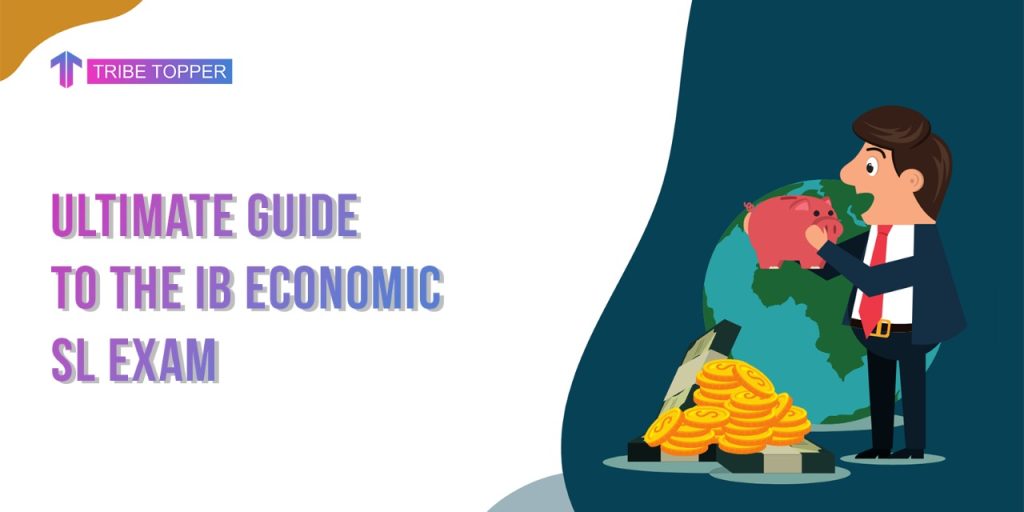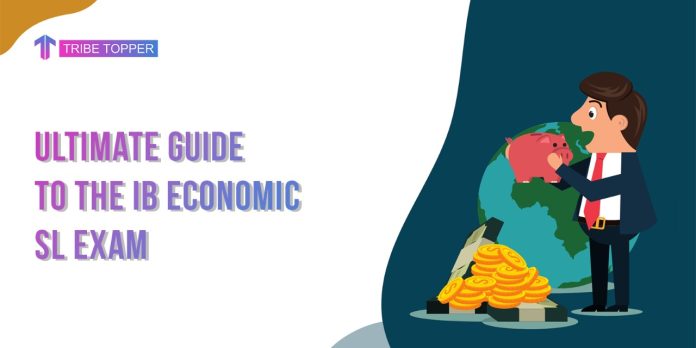Ultimate Guide to the IB Economic SL Exam
For high school curriculum options, few are considered as academically rigorous and rewarding as the International Baccalaureate Diploma Program, or IBDP for sure. Well, it is considered comparable to the APs in the United States and perhaps even more valuable abroad. It’s surely an inspiring set of classes, and traversing the difficult exams that come with IBDP Economics can be a herculean task. In this article, we are going to help break down one of the IBDP’s major subjects, Economic SL and make exams a bit more approachable for aspiring students.

Difference: IB HL vs SL
These are the two variants in all IB classes: HL stands for Higher Level and SL is Standard Level. The major difference between the two is attributed to levels of difficulty. A higher level is for students who can study hard during the two years of IB course and hence means more content is required to prepare for examinations. In economics, this course is offered in both SL and HL variants, but in this article, we’ll be focusing on the SL.
It’s better to opt for the standard level if the class you’re taking isn’t too closely related to your aim for college or any plan that you have for further education. In this way, you reserve one of the slots for HL classes for something that does align more with your further educational goal.
How does SL Exam work?
The IB Economic SL Exam is divided into two papers:
Paper 1 is 40% of the total grade with 1 hour and 30 minutes as the time limit. Paper 1 is an essay paper having two sections, A and B. The A Section is the microeconomics part, containing two questions with numerous sub-questions, but you only need to answer anyone. Section B relates to macroeconomics and has two questions with only one needing to be answered.
Paper 2 is 40% of the total grade with a 1 hour and 30 minutes time limit. It is a data response test, which is also divided into A and B sections. Section A focuses on international economics and markets. Section B is about developmental economics and will usually contain questions pertaining to a more “discussion” formatted written response. In both sections, you will have to answer anyone’s question.
How can I score in the IB Economics SL Paper?
In Paper 1, you will have 50 attainable points and 40% of the total grade in the class. Otherwise, Paper 2, it has 40 attainable points and is worth another 40% of your grade. Each question is graded based on a rubric/mark scheme. These marking schemes are made in coordination with the exam, which is good news for every study! This means that when you study for exams by practicing previous papers, you can check your answer with the IB rubrics as well. The past papers and marking schemes can always be offered at the best platform, like Tribe Topper.
As mentioned above, exams only make up 80% of your total grade in IB Economic SL Subject, which means there’s an extra 20% left over. This 20% consists of internal assessments and tasks graded at school instead of by IB themselves and they can range from midterms to homework. To calculate your total grade in the class, IB uses a scale from 1 to 7, with 1 being the worst and 7 being the best. They also use grade boundaries. By calculating your overall internal assessment grades and paper scores, you can get a total sum of points. Divide it by the total no. of attainable points and you will get a percentage.
Final Thoughts –
IB exams are hard, but hopefully, this guide can make it just a little more effortless for you! Along with classes, there are so many factors that are involved with college admissions as well. So, it can be hard to get a rough idea of what your admissions chances look like. It’s an innovative tool that uses your GPA courses, extracurriculars, and more than metrics to provide you with unique chances of getting into an institute.











